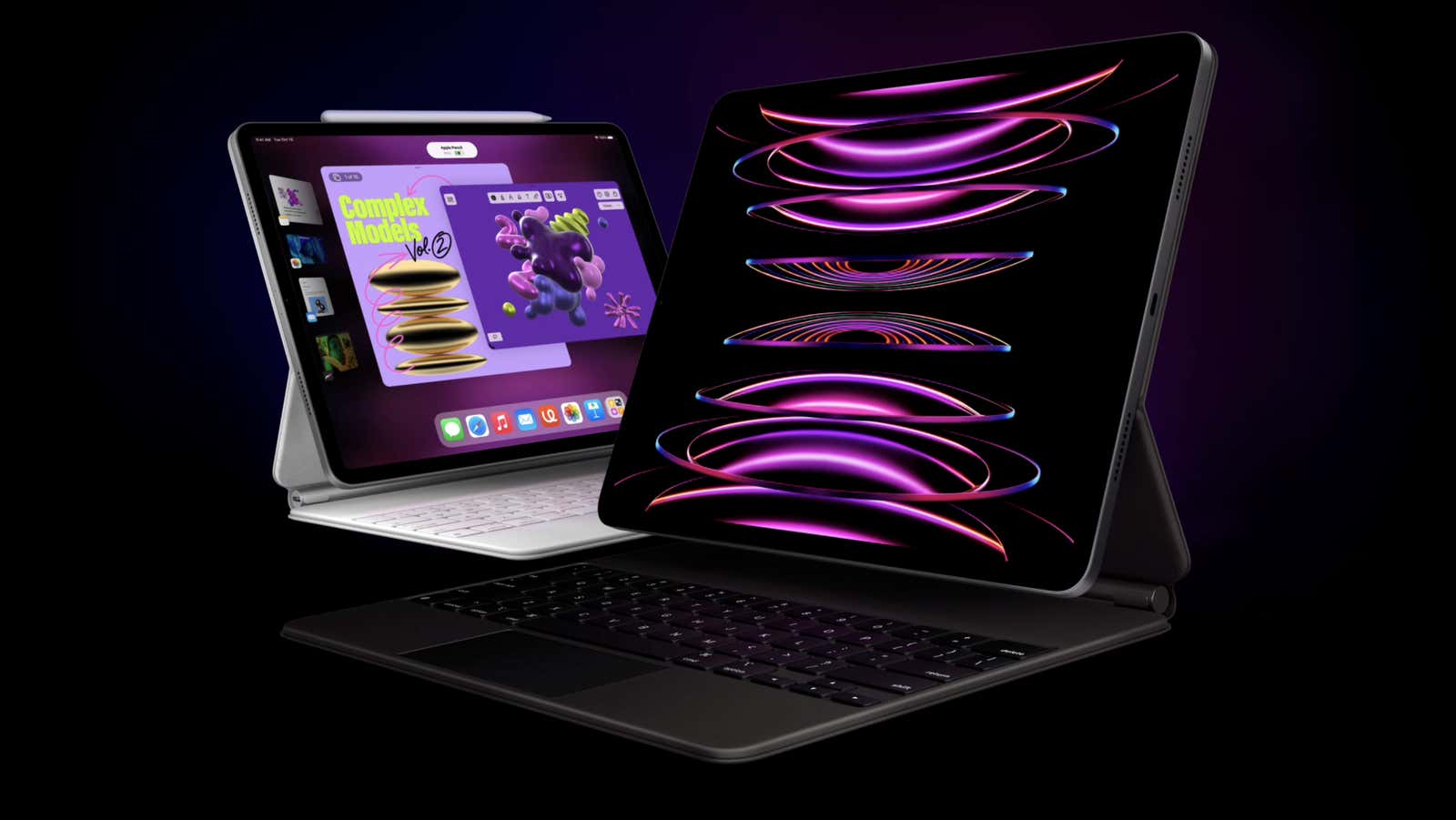Apple’s New IPad Pro Is Missing the IPad 10’s Best Feature

While using the iPad, I wondered: why is the camera on the short side? This made some sense before we started using the iPad as a laptop replacement: if you’re logging in from your smartphone, it seems more natural to hold the iPad in portrait for video calls. But times have changed and many of us keep our iPads right on the table, whether it’s a traditional workstation or on a stand for easier scrolling. The non-standard camera means it’s inconvenient when making video calls: unless you move your iPad, you’ll always be looking away when you should be looking at the person you’re talking to.
However, 11 years later, Apple decided to change the situation. As part of an overall redesign, the tenth generation iPad now has a camera on the long side of the tablet, where you’d expect. When you start a video call with iPad 10, you’ll look like you’re using a laptop or a traditional webcam. The only benefit you get on the iPad is the slow, sharp zoom when Center Stage is turned on. Other than that, it’s the same experience, albeit vastly improved.
With the new camera placement, the iPad 10 now features the same design language as all other iPads, which means there is no Home button (RIP). It also features the A14 chip found in the iPhone 12, which pretty much makes this a “budget” tablet. The rear 12-megapixel camera can shoot 4K video, and all models now have Wi-Fi 6, while cellular models can connect to 5G. There’s also a new Magic Keyboard built specifically for the iPad 10, with a range of features to control things like screen brightness or volume. Revolutionary.
However, these new features will cost you money. While the Apple iPad 9 costs $329, this new tablet costs $449. For years, Apple has been pricing its base iPad much lower than other iPads as an affordable way for customers to access their tablets. The iPad 10 no longer seems to fit this strategy. Is moving the webcam to the other side of the iPad that expensive?
If today’s announcement were only for the 10th generation iPad, you’d expect this new design philosophy to make its way to all iPad models during their next update. The iPad mini, iPad Air, and iPad Pro all look set to join the camera revolution over time, right?
Well, apparently not. Along with the iPad 10, Apple announced the next generation of the iPad Pro , which includes the M2 chip as an upgrade to the M1 that was used in previous models. For the most part, the M1 chip was already redundant on a machine running iPadOS, so it’s likely to be a while before we see any apps actually take advantage of Apple’s second-generation silicon’s extra performance capabilities (with the exception of DaVinci). Decide). The Pro also supports Wi-Fi 6E and native ProRes video capture, as well as the ability to detect the Apple Pencil before you touch the screen.
But more surprising is that Apple didn’t include the new Pros. For some reason, the front camera remained in its original position. Why? This means that spending over $300 on an iPad is going to get you the worst video calling experience, even if it’s the experience you’ve always known. Speaking of worst experiences, the iPad Pro Magic Keyboard remains unchanged – there are a number of features missing for you. You will still need to change the volume and adjust the screen brightness on the iPad Pro itself. Minor inconveniences, but ones you don’t expect when choosing an iPad that Apple charges up to $2,200 for.
Apple has taken some strange steps with its latest iPads. The “budget” iPad is now best for video calls, but even that isn’t exactly “cheap” anymore, and the best iPad you can buy is actively lacking features. Apple works in mysterious ways.